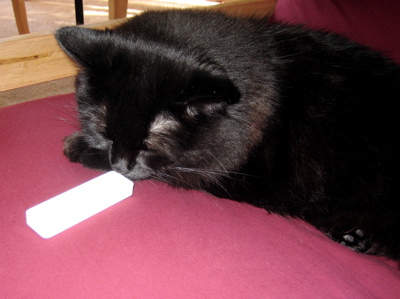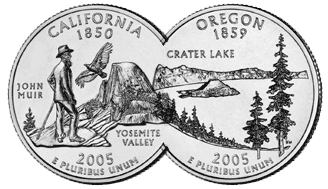I bought Myst V: End of Ages a few weeks ago, and I’ve been playing it since (alternating with the advanced levels of Marble Blast Gold, which I’ve been slowly working my way through for about a year). Very minor spoilers below.
If you recall my entries on Myst III and Myst IV, I have yet to finish a Myst game without help. I’m trying to solve Myst V myself, although technically I may have already failed: I was unable to get past the very first door in the game (not even a puzzle, really), without Laura’s help. That’s less help than I used for the previous games, though, and I’m trying to get it done by myself. What makes this both very hard and very easy at the same time is that I already own the Official Strategy Guide. For some reason, the standard retail edition of the game is Windows-only; to get the Mac program, I had to buy the Limited Edition, which includes the strategy guide along with some other extras. So if I wanted to cheat, it would be oh-so-easy, and in part, the ease of cheating makes it easier to resist.
I’m now about half done, or at least I’ve completed half of the items necessary for the task the game has given me. I don’t know how this equates in terms of time spent, or even of actual gameplay. But I feel like I’ve accomplished something. Of course, it gets harder from here, since Myst V is non-linear, and I’ve solved the half that I found easier. I’ve actually been stuck at pretty much the same place for almost a week now, but I finally made a breakthrough earlier this evening, which was very exciting: I decided to look at everything again, deliberately and carefully, and noticed a clue I hadn’t seen before, which made everything click into place. That’s what I love about the Myst games; when suddenly it all makes sense. The part I don’t like is the hours of frustrating madness leading up to that point.
I like the world of this game a lot, and the puzzles are closer to Myst and Riven than Myst III and IV, and that’s a good thing. But the game mechanics are a little challenging. The new exploration modes are cool, but I switch between them a lot, since none of them seems to be better (maybe that’s intentional). There are also some bugs in the game, and it’s much slower on my PowerBook than it ought to be. And in the height of frustrating, I once accidentally solved an entire age far before I was supposed to; I was frustrated and doing essential random things, and accidentally got close enough to the correct action that the game thought I had solved it. Luckily I had saved recently, and was able to immediately quit, reload my saved game, and try to forget what I had done. But that was rather upsetting.
Minor problems aside, I am very happy with Myst V so far. We’ll see how I feel when/if I ever complete it.



 The other day I received as change
The other day I received as change